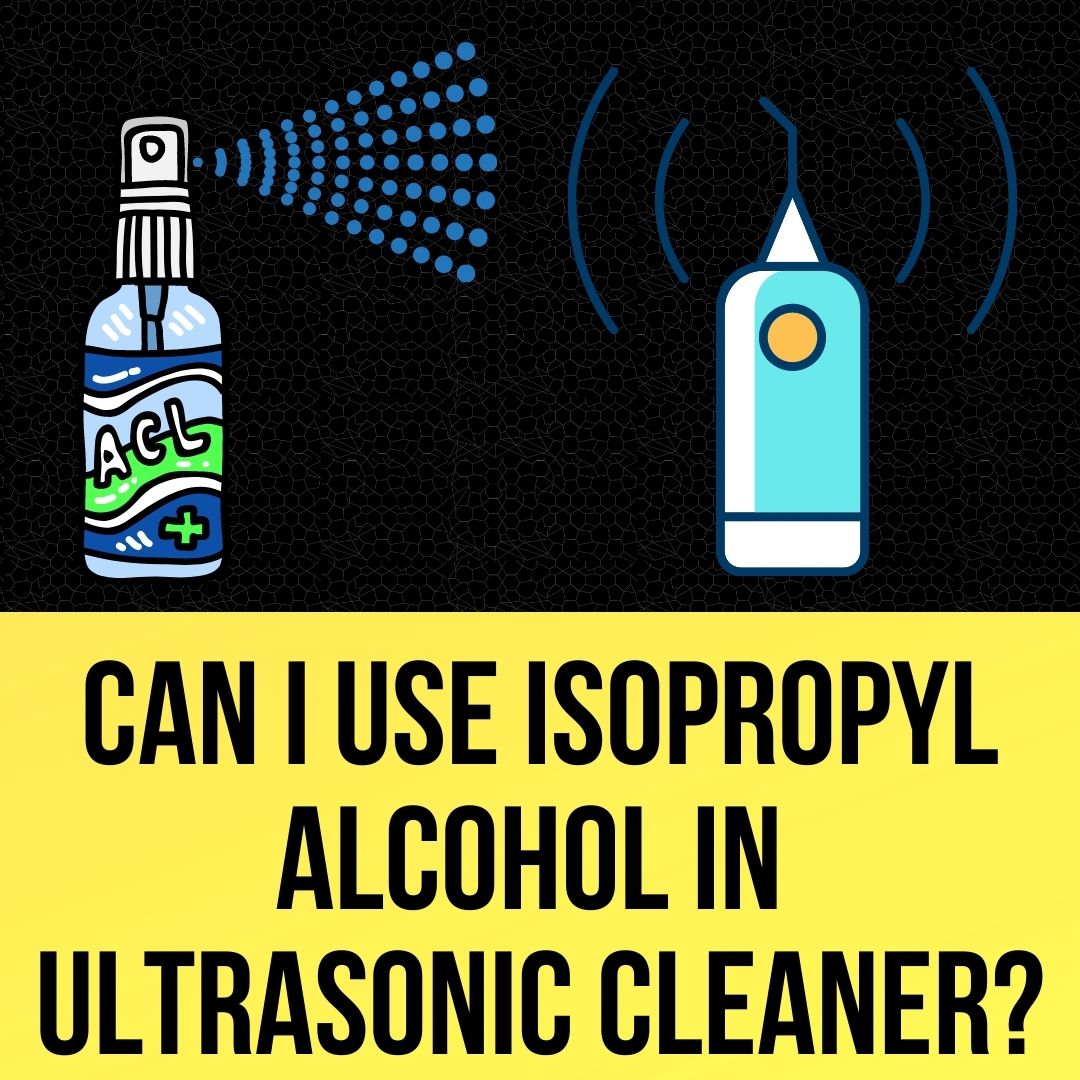
Isopropyl Alcohol (IPA) in Ultrasonic Cleaner: A Comprehensive Guide on Safe and Effective Usage
Ultrasonic cleaners have become popular tools for cleaning a variety of items, from jewelry to electronic components. One common question that arises is whether isopropyl alcohol (IPA) can be used in ultrasonic cleaners. In this article, we will delve into the properties of isopropyl alcohol, the mechanics of ultrasonic cleaning, and the potential benefits and risks associated with using IPA in ultrasonic cleaners.
Understanding Isopropyl Alcohol (IPA):
Isopropyl alcohol, commonly known as rubbing alcohol, is a versatile solvent that is widely used for cleaning and disinfecting surfaces. It is known for its ability to dissolve oils, greases, and various types of dirt, making it a popular choice for cleaning electronic components, optical devices, and sensitive equipment. IPA is readily available in different concentrations, with 70% and 99% being the most common.
Properties of Isopropyl Alcohol:
- Solvent Properties:
- IPA’s effectiveness as a solvent is due to its ability to break down and dissolve a wide range of substances, including oils, resins, and organic compounds.
- Evaporation Rate:
- One of the key characteristics of IPA is its relatively fast evaporation rate. This property makes it suitable for cleaning applications where rapid drying is desired.
- Antimicrobial Properties:
- IPA is known for its antimicrobial properties, making it an effective disinfectant. However, its use in an ultrasonic cleaner may not fully leverage this aspect.
Mechanics of Ultrasonic Cleaning:
Ultrasonic cleaning involves the use of high-frequency sound waves to create cavitation bubbles in a liquid cleaning solution. These bubbles implode upon contact with the surfaces of the items being cleaned, generating microscopic shock waves. These shock waves help dislodge contaminants from the surfaces, providing a thorough and efficient cleaning process.
Can Isopropyl Alcohol be Used in Ultrasonic Cleaners?
The use of isopropyl alcohol in ultrasonic cleaners depends on several factors, including the concentration of IPA, the materials being cleaned, and the specific ultrasonic cleaner being used. Let’s explore the considerations for using IPA in ultrasonic cleaning:
1. Concentration of Isopropyl Alcohol:
- Higher concentrations of IPA, such as 99%, may not be suitable for ultrasonic cleaning due to their rapid evaporation rate. Lower concentrations, around 70%, are often preferred as they provide a balance between solvency and sufficient liquid retention during the cleaning process.
2. Compatibility with Materials:
- Some materials may be sensitive to the solvent properties of isopropyl alcohol. Certain plastics or rubber components in electronic devices, for example, may be adversely affected by prolonged exposure to IPA. It is crucial to check the compatibility of the materials with IPA before using it in an ultrasonic cleaner.
3. Ultrasonic Cleaner Specifications:
- Different ultrasonic cleaners have varying specifications, including power settings and frequency. Some cleaners may be better suited for use with certain cleaning solutions, and the manufacturer’s guidelines should be consulted to ensure safe and effective operation.
Benefits of Using IPA in Ultrasonic Cleaners:
- Effective Degreasing:
- IPA’s ability to dissolve oils and greases makes it effective for degreasing applications, especially in industries where precision and cleanliness are paramount.
- Fast Drying:
- The fast evaporation rate of IPA aligns well with the rapid drying process inherent in ultrasonic cleaning. This can be advantageous for applications where quick turnaround times are essential.
- Compatibility with Electronics:
- IPA is commonly used for cleaning electronic components. When used in controlled conditions and concentrations, it can be a suitable cleaning agent for electronic devices in ultrasonic cleaners.
Risks and Considerations:
- Material Compatibility:
- Certain materials, especially those sensitive to solvents, may experience degradation or discoloration when exposed to isopropyl alcohol. It is essential to test the compatibility of materials before widespread use.
- Safety Concerns:
- While IPA is generally safe to use, proper safety precautions must be taken. This includes ensuring adequate ventilation and avoiding prolonged skin contact. Safety data sheets for the specific IPA concentration being used should be consulted.
- Alternative Cleaning Solutions:
- Depending on the cleaning requirements and material compatibility, alternative cleaning solutions, such as water-based cleaners or specialized ultrasonic cleaning solutions, may be considered.
Guidelines for Using IPA in Ultrasonic Cleaners:
- Dilution:
- If using a high-concentration IPA, consider diluting it with distilled water to achieve a more suitable concentration for ultrasonic cleaning.
- Compatibility Testing:
- Conduct compatibility tests on a small, inconspicuous area before subjecting the entire item or material to ultrasonic cleaning with IPA.
- Proper Ventilation:
- Ensure adequate ventilation in the cleaning area to prevent the buildup of fumes. Ultrasonic cleaning generates aerosols that may contain solvent vapors.
- Follow Manufacturer’s Guidelines:
- Adhere to the guidelines provided by the manufacturer of both the ultrasonic cleaner and the isopropyl alcohol. This includes recommended concentrations, cleaning times, and safety precautions.
Conclusion:
In conclusion, isopropyl alcohol can be used in ultrasonic cleaners, but careful consideration must be given to factors such as concentration, material compatibility, and safety. When used appropriately, IPA can offer effective degreasing and cleaning capabilities in ultrasonic applications. However, it is essential to follow guidelines, conduct compatibility tests, and prioritize safety to ensure optimal results without compromising the integrity of the materials being cleaned. As with any cleaning process, understanding the properties of both the solvent and the items being cleaned is crucial for achieving successful outcomes.
(FAQs) related to using isopropyl alcohol (IPA) in ultrasonic cleaners:
1. Can I use pure (100%) isopropyl alcohol in an ultrasonic cleaner?
- It is generally not recommended to use pure isopropyl alcohol in an ultrasonic cleaner. Higher concentrations may evaporate too quickly and may not provide optimal cleaning results. A diluted solution, around 70%, is often more suitable.
2. Is isopropyl alcohol safe for cleaning delicate electronic components in an ultrasonic cleaner?
- Isopropyl alcohol is commonly used for cleaning electronic components. However, it is important to check the compatibility of specific components with IPA and follow manufacturer guidelines to avoid potential damage.
3. How do I dilute isopropyl alcohol for use in an ultrasonic cleaner?
- To dilute isopropyl alcohol, mix it with distilled water. For ultrasonic cleaning, a concentration of around 70% is often recommended. You can mix equal parts of 99% isopropyl alcohol and water to achieve this concentration.
4. Can isopropyl alcohol damage certain materials in an ultrasonic cleaner?
- Yes, certain materials, especially plastics and rubber components, may be sensitive to isopropyl alcohol. It is crucial to conduct compatibility tests on a small, inconspicuous area before using IPA on the entire item or material.
5. Are there alternatives to isopropyl alcohol for ultrasonic cleaning?
- Yes, there are alternative cleaning solutions suitable for ultrasonic cleaners. Water-based cleaners and specialized ultrasonic cleaning solutions designed for specific applications are commonly used.
6. How long should I run an ultrasonic cleaner with isopropyl alcohol?
- The cleaning time in an ultrasonic cleaner with isopropyl alcohol depends on factors such as the type of contaminants and the item being cleaned. Following the manufacturer’s guidelines and conducting tests can help determine the optimal cleaning time.
7. Can isopropyl alcohol be used to clean jewelry in an ultrasonic cleaner?
- Isopropyl alcohol is effective for cleaning jewelry in an ultrasonic cleaner. However, ensure that the jewelry materials are compatible with IPA and follow any specific guidelines provided by the jewelry manufacturer.
8. Are there any safety concerns when using isopropyl alcohol in an ultrasonic cleaner?
- Safety precautions should be observed when using isopropyl alcohol, including ensuring proper ventilation to prevent inhalation of fumes. Users should also avoid prolonged skin contact and follow safety guidelines outlined in the material safety data sheets (MSDS) for the specific IPA concentration being used.
9. Can ultrasonic cleaning with isopropyl alcohol remove rust?
- Ultrasonic cleaning with isopropyl alcohol may help in removing some types of rust, especially when combined with appropriate cleaning agents. However, the effectiveness can vary, and mechanical methods may be needed for stubborn rust.
10. Is it necessary to rinse items after ultrasonic cleaning with isopropyl alcohol?
- Rinsing items after ultrasonic cleaning with isopropyl alcohol is a good practice to remove any remaining solvent residue. Use distilled water for rinsing, and ensure the items are thoroughly dried before use.
11. What Liquids Can You Use in an Ultrasonic Cleaner?
Ultrasonic cleaners are versatile and can be used with various liquids, including:
- Water
- Isopropyl alcohol (IPA)
- Cleaning solutions designed for ultrasonic cleaning
- Distilled water with or without additives
12. What Can You Not Put in an Ultrasonic Cleaner?
Avoid putting items or liquids that can be damaged or pose a safety risk, such as:
- Delicate gemstones or jewelry with glued parts
- Soft plastics that may deform
- Items with porous surfaces that can trap cleaning solution
- Highly flammable or explosive materials
13. Can I Use Distilled Water in an Ultrasonic Cleaner?
Yes, distilled water is commonly used in ultrasonic cleaners. It is a neutral and effective solvent that can be used alone or in combination with specialized cleaning solutions.
14. Can You Use Alcohol in an Ultrasonic Cleaner?
Yes, isopropyl alcohol (IPA) is commonly used in ultrasonic cleaners for its cleaning and degreasing properties. However, it should be used in appropriate concentrations and with caution.
15. What Can I Use in an Ultrasonic Cleaner for a Carburetor?
For cleaning a carburetor in an ultrasonic cleaner, you can use a mixture of water and a specialized ultrasonic cleaning solution designed for automotive parts. Additionally, isopropyl alcohol can be effective for degreasing carburetor components.
16. Can I Use Dish Soap in an Ultrasonic Cleaner?
Yes, mild dish soap can be used in an ultrasonic cleaner, especially for cleaning items with greasy or oily residues. However, ensure that the soap is non-abrasive and doesn’t leave behind residues.
17. Can Mineral Spirits Be Used in an Ultrasonic Cleaner?
Mineral spirits can be used in an ultrasonic cleaner for certain cleaning applications, but it’s essential to follow safety guidelines. Ensure adequate ventilation, and do not use mineral spirits with items that may be sensitive to solvents.
18. What Is the Flash Point of Isopropyl Alcohol?
The flash point of isopropyl alcohol is around 12 to 21 degrees Celsius (53 to 70 degrees Fahrenheit). This is the temperature at which it can ignite when exposed to an open flame or spark.
19. How Often Should You Change the Water in an Ultrasonic Cleaner?
The frequency of changing the water in an ultrasonic cleaner depends on the type of cleaning task and the level of contamination. As a general guideline, it’s recommended to change the water after each cleaning session or when it becomes visibly contaminated.
20. What Is Ultrasonic Cleaning Solution Made Of?
Ultrasonic cleaning solutions can vary, but they typically contain water, detergents, and other additives designed to enhance the cleaning process. Some solutions are specialized for specific applications, such as cleaning jewelry, medical instruments, or automotive parts.
21. How to Safely Use Solvent (IPA/Ethanol) with Ultrasonic Cleaner?
When using solvents like isopropyl alcohol (IPA) or ethanol in an ultrasonic cleaner:
- Dilute the solvent appropriately to prevent rapid evaporation.
- Ensure proper ventilation to avoid inhalation of fumes.
- Adhere to safety guidelines and use personal protective equipment if needed.
- Test the compatibility of materials with the solvent before extensive use.
- Follow the manufacturer’s recommendations for concentrations and cleaning times.

My name is Logan, and I’m a 36-year-old dad who owns a small pressure-washing company in the suburbs of Atlanta, Georgia. My main goal with rubbing-alcohol.com is to show you how versatile isopropyl rubbing alcohol can be! I hope. You find it useful.
